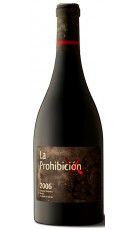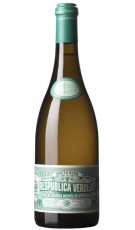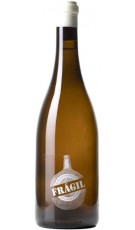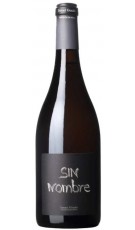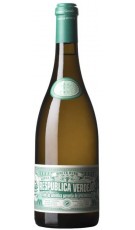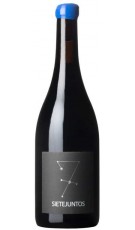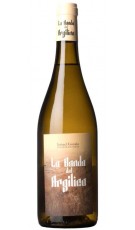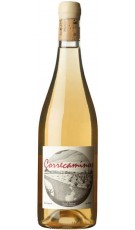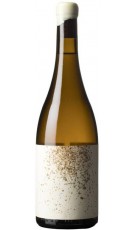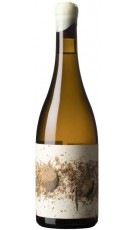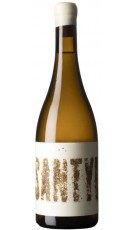
Vino de la Tierra de Castilla y León There are 138 products.
VT de Castilla y León
ORDEN AYG/296/2013, de 5 de abril, por la que se aprueba el Reglamento de la Indicación Geográfica Protegida «Vino de la Tierra de Castilla y León». Por O...
-
La Prohibición 2017
Red Wine CrianzaVIÑEDOS Y BODEGAS PITTACUMVino de la Tierra de Castilla y LeónRed Wine Crianza, 19 months in french oak barrels
Reduced price!In stock -
Respublica Verdejo 2015
Natural white wine.MICROBIO WINESVino de la Tierra de Castilla y LeónWhite wine made from Verdejo grapes, the estate is made up of siliceous sand and pebbles, "Grand Cru" plot in the El Carril area. Alcoholic fermentation with native yeasts in 228 l Burgundian barrels.
Reduced price!In stock -
MicroBio Fragil 2022
Natural white wine.MICROBIO WINESVino de la Tierra de Castilla y LeónWhite wine made from Verdejo grapes, siliceous sand and pebbles, manual harvest, racked must with low turbidity, alcoholic fermentation in 16-liter demijohns with native yeasts.
Reduced price! -
Sin Nombre 2020
Natural white wine.MICROBIO WINESVino de la Tierra de Castilla y LeónWhite wine made from Verdejo grapes, sandy and sandy with gravel and clay sheets, "Los Navales" payments. Manual harvest, alcoholic fermentation with native yeasts in oak barrels.
Reduced price!In stock -
Respublica Verdejo 2021
Natural white wine.MICROBIO WINESVino de la Tierra de Castilla y LeónWhite wine made from Verdejo grapes, the estate is made up of siliceous sand and pebbles, "Grand Cru" plot in the El Carril area. Alcoholic fermentation with native yeasts in 228 l Burgundian barrels.
Reduced price!In stock -
Sietejuntos Terroir...
Natural red wine.MICROBIO WINESVino de la Tierra de Castilla y LeónNatural red wine made from Tempranillo grapes, vertical press, 16-20 days of maceration, alcoholic fermentation with native yeasts in stainless steel tanks. Clay soils.
Reduced price! -
Sietejuntos Arroyuelos...
Natural red wine.MICROBIO WINESVino de la Tierra de Castilla y LeónNatural red wine made from Tempranillo grapes with a small percentage of Syrah, vertical press, 12-14 days of maceration, alcoholic fermentation with native yeasts in stainless steel tanks....
Reduced price! -
La Banda del Argilico 2023
Natural white wine.MICROBIO WINESVino de la Tierra de Castilla y LeónNatural wine made from Verdejo grapes, 2 vintages, the first looking for freshness and acidity and the second mostly ripening. It rests for 5 months with its fine lees in stainless steel tanks.
Reduced price! -
MicroBio Correcaminos 2022
Natural white wine.MICROBIO WINESVino de la Tierra de Castilla y LeónNatural wine made from Verdejo grapes, manually harvested, pressing the whole grape in a vertical press (without fear of possible oxidation), partial racking, alcoholic fermentation with native...
Reduced price! -
A. SantYuste Paraje...
White Wine.ESMERALDA GARCÍAVino de la Tierra de Castilla y LeónWhite wine made from old Verdejo vineyards (130-180 years) by Esmeralda García, on ungrafted foot in the Segovia area. Limestone loamy-sandy soils of great depth.
Reduced price! -
A. SantYuste Paraje El...
White Wine.ESMERALDA GARCÍAVino de la Tierra de Castilla y LeónWhite wine made from old Verdejo vineyards (180-220 years) by Esmeralda García, on ungrafted foot in the Segovia area. Limestone loamy-sandy soils of great depth.
Reduced price! -
Arenas de SantYuste Vino de...
White Wine.ESMERALDA GARCÍAVino de la Tierra de Castilla y LeónWhite wine made from old Verdejo vineyards by Esmeralda García, on ungrafted foot in the Segovia area. Limestone loamy-sandy soils of great depth.
Reduced price!

VT de Castilla y León
ORDEN AYG/296/2013, de 5 de abril, por la que se aprueba el Reglamento de la Indicación Geográfica Protegida «Vino de la Tierra de Castilla y León». Por Orden de 15 de junio de 2000, de la Consejería de Agricultura y Ganadería («B.O.C. y L.» n.º 126, de 30 de junio), se reguló por primera vez el uso de la indicación geográfica «Vino de la Tierra de Castilla y León». Posteriormente, esta disposición sería derogada por la Orden de 10 de septiembre de 2002, de la Consejería de Agricultura y Ganadería («B.O.C. y L.» n.º 185, de 24 de septiembre), esta a su vez por la Orden AYG/323/2005, de 7 de marzo («B.O.C. y L.» n.º 51, de 15 de marzo) y, finalmente esta última, por la Orden AYG/57/2007, de 17 de enero («B.O.C. y L.» n.º 17, de 24 de enero), por la que se aprueba del Reglamento del «Vino de la Tierra de Castilla y León», actualmente en vigor. La Ley 24/2003, de 10 de julio, de la Viña y del Vino («B.O.E.» núm. 165, de 11 de julio), regula en su Título II el sistema de protección del origen y la calidad de los vinos, en concreto, en el artículo 19, los vinos con derecho a la mención tradicional «vino de la tierra».
Location
Castilla y León consists of a plateau with slight inclination East-West, surrounded by mountain systems: to the North, the Cantabrian mountains; to the Northeast, the Iberian; to the South, the Central and Northwest, the Montes de León.
Soils
Morphologically Castilla y León is a large basin filled by tertiary materials (conglomerates, clays, Sands and loams) Miocene. At certain points, they are protected by other materials more resistant to erosion, giving rise to the Moors, characteristic of the regional landscape. Moreover, there are rivers, which make up vegas and terraces and the outcrops of the socket Paleozoic in the western part of the Region. All of this ends up composing the morphological units of Castilla y León.
Climate
The predominant climate in Castilla y León is, therefore, continental semiarid Mediterranean-style, characterized by long, cold winters and short, warm and dry summers with a regime of scarce and unevenly distributed rainfall throughout the year, as well as for the extensive period of frost, with frequent late frosts and marked temperature fluctuations between summer and winter, and between day and night.
Vineyards
Growing conditions will be those that tend to get the best qualities of grape. They will be so they express the best balance between vegetation and the quality of the production.
Grapes
Whites: Albillo Mayor, Albillo Real, Viura (sin. Macabeo) y Verdejo. Authorized: Rojal (sin.: Malvasía Riojana, Alarije), Albarín Blanco, Albariño, Chardonnay, Malvasía Castellana (sin. Doña Blanca), Gewürztraminer, Godello, Montúa (sin. Chelva), Moscatel de Alejandría, Moscatel de grano menudo, Hondarrabi Zuri, Palomino, Riesling, Sauvignon Blanc, Treixadura y Viognier.
Reds: Garnacha Tinta, Juan García (sin. Mouraton), Mencía, Prieto Picudo y Tempranillo (sin.: Tinto Fino, Tinta del País, Tinta de Toro). Authorized: Bruñal (sin. Albarín Tinto), Cabernet Sauvignon, Garnacha Roja (sin. Garnacha Gris), Garnacha Tintorera, Graciano, Malbec, Merenzao, Merlot, Hondarrabi Beltza, Petit Verdot, Pinot Noir, Rufete y Syrah.
Production 2012
The maximum yields allowed for the production of the wines protected by the protected geographical indication «Came from the land of CASTILLA Y LEÓN» will be 16,000 kg of grapes per hectare of area, both for white varieties to red varieties, more than 120 hectolitres of wine per hectare may not be obtained.
Wines
The wines protected by the protected geographical indication «Came from the land of CASTILLA Y LEÓN» belong to category 1 "wine", 3 "liqueur wine" category, the category 5 "quality sparkling wine", category 8 "semi-sparkling wine" and 16 "wine of overripe grapes" category in accordance with annex XI ter of Regulation (EC) No 1234 / 2007.

(+34) 91 129 11 11
(+34) 638 458 218
- Brandy
- Cognac
- Gin Premium
- Ron
- Whisky
- Denomination of Origin
- Winery


















